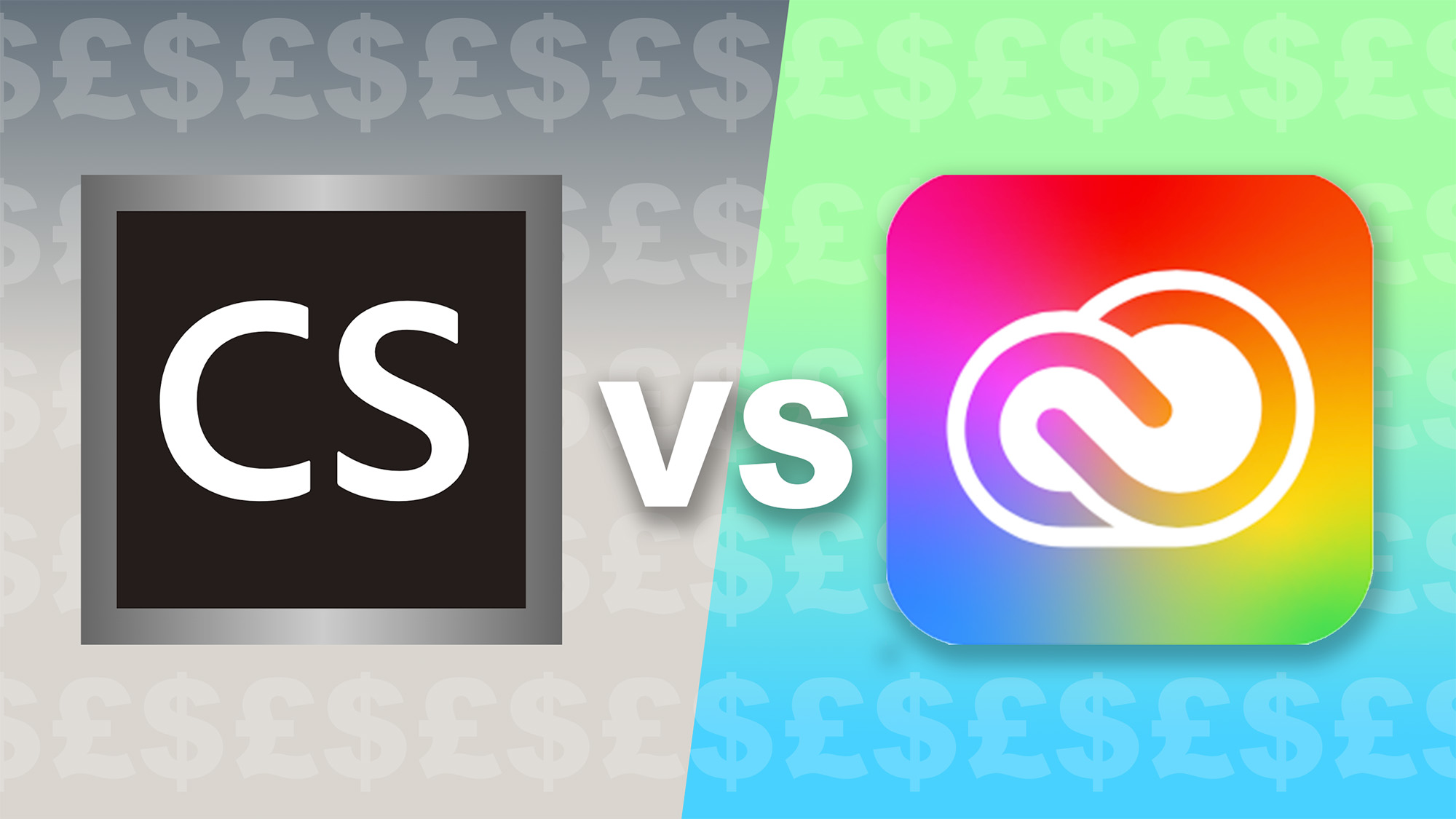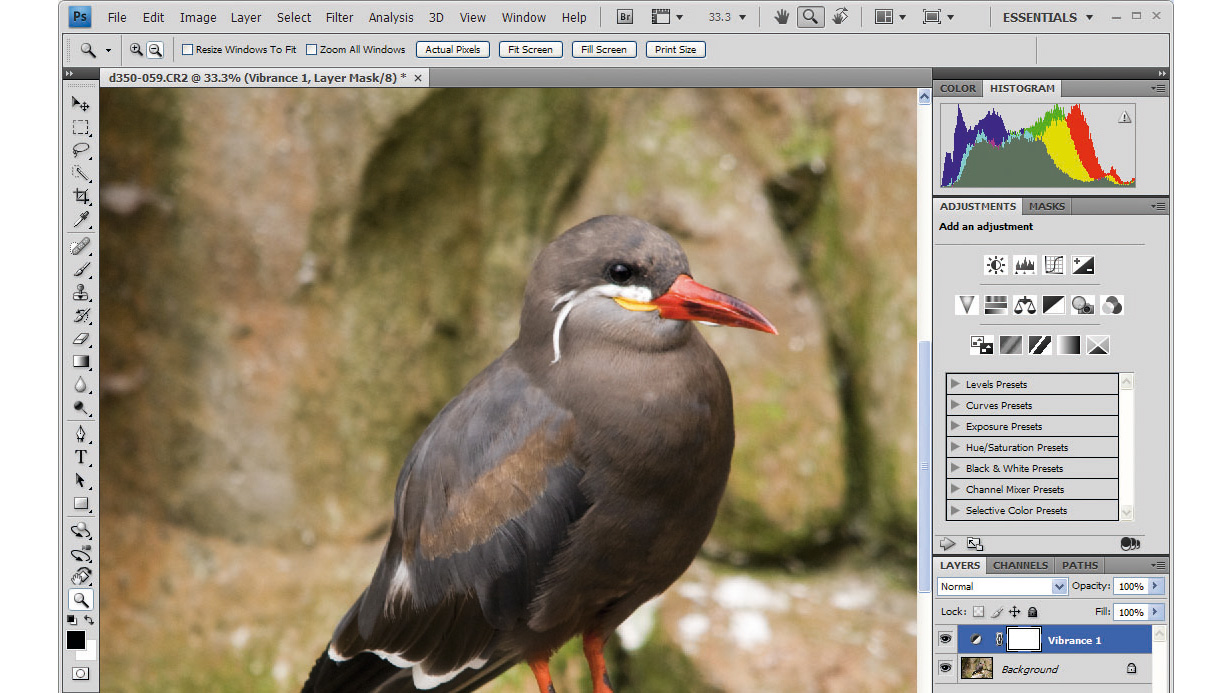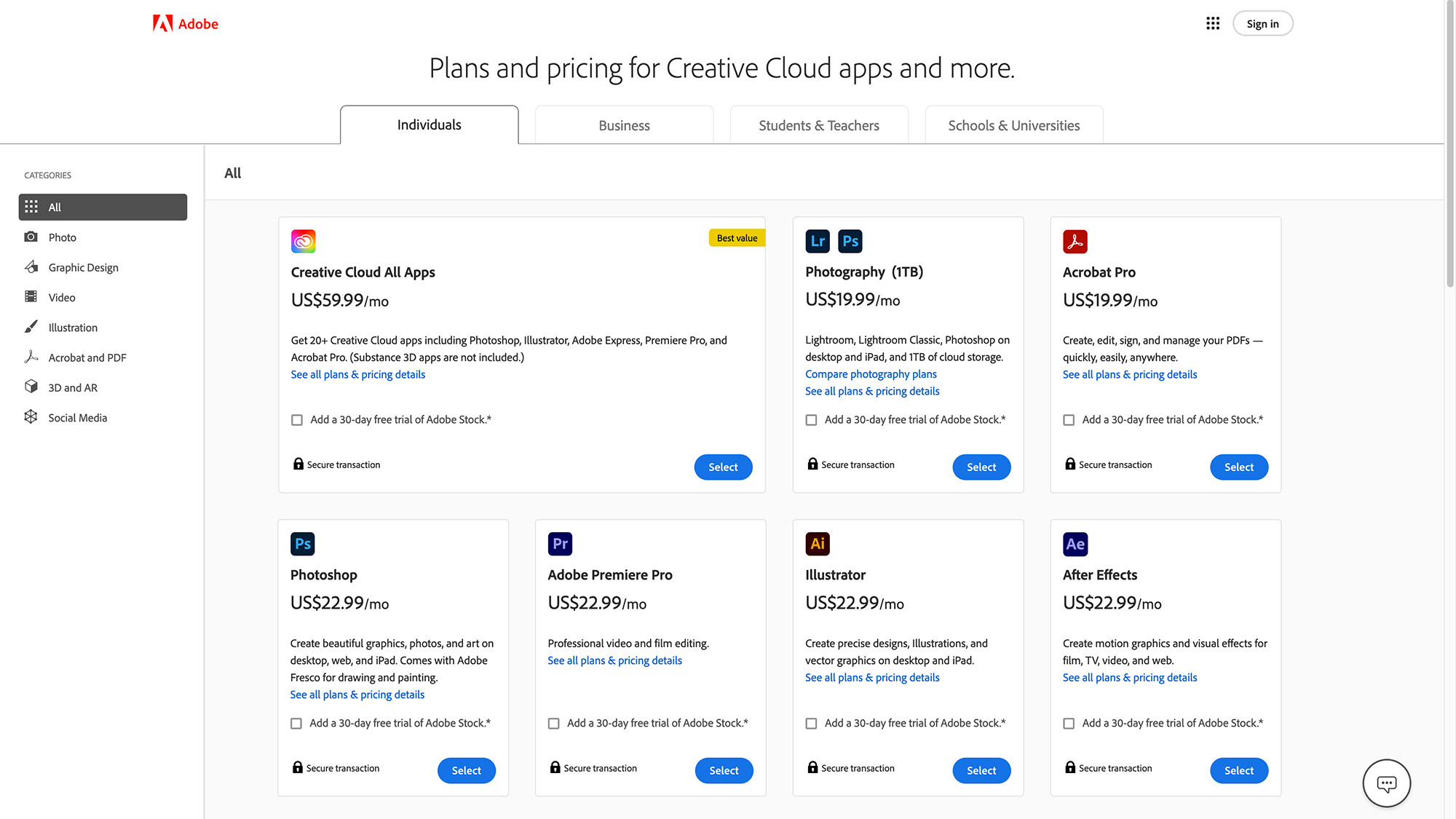
Despite introducing us to some of the best photo editing software, I can't remember a time when it wasn't hip to hate on Adobe. After all, it's a mega-corporation that could, theoretically, hold the creative industry to ransom with its roster of industry-standard software (unless you're to believe that could all change with Apple's recent acquisition of Pixelmator). But lately – following that messy AI T&Cs debacle – it seems the Adobe naysayers are out in force.
Ask a pool of creatives what they despise most about Adobe, and you can bet your bottom dollar the vast majority will say Creative Cloud's subscription model. And although I'm well aware I'm in the minority, I've always considered it preferable to the old Creative Suite's one-off payments, especially if you can land a juicy Black Friday deal.
I first encountered Adobe software when I studied art and photography at college, circa 2008. Adobe Photoshop and Illustrator lessons were my absolute favorites. I soon conquered the learning curve and found myself digging deeper into the CS4 software as an extracurricular activity. Every chance I got, I was glued to an Apple iMac in my classroom. The problem was, I had to go home at some point…

I consider myself to have had a fortunate upbringing, but my parents certainly couldn't justify spending $199 on Adobe Photoshop CS4 Extended Student Edition (nearly $300 today, adjusting for inflation - find out about current Adobe student discounts). Let alone Illustrator…
So, for about a year, I learned how to use Photoshop by day and spent my evenings working out how I did the exact same thing on open-source software GIMP. Eventually, a friend introduced me to a cracked version of CS2, later CS5, but these were buggy and the latter came with a nasty virus…
Once I'd left college there was absolutely no way I could afford Adobe's huge prices. Sure, upgrade prices weren't nearly as bad, but getting a foot on the Adobe ladder was simply unobtainable for me. And I'm guessing, thousands of other fledgling creatives. Eventually, I was able to access Adobe software at work, but even then, I was forced to use CS5, even after the release of CS6. Not the end of the world, but not having access to new features was certainly an annoyance.
Then, in 2011, Adobe launched Creative Cloud. By mid-2013, Creative Suite's tenure had come to an end. There would be no CS7, a Creative Cloud subscription was the only option if you wanted the latest Adobe software. And while many creatives – presumably those paying for significantly cheaper upgrades – lambasted the payment model, I could finally afford Adobe software and would never have to worry about putting down a big lump sum. Best of all, so long as my hardware was up to scratch, it would always be up to date.
This is why I've always preferred the subscription model. It's more accessible for fledgling creatives. I don't think anyone can deny that a big down payment of hundreds of dollars is a huge ask for a student or start-up. Besides, Adobe certainly wasn't the first company to enforce a subscription model and nowadays, subscriptions are the digital norm. Everything from Microsoft's Game Pass to Amazon Prime requires a subscription.

So why all the hate? Well, some people like to own the software they use. And while this is always going to be preferable, it's worth noting that – now physical media is all but extinct when it comes to computing software – you never truly own a digital download. This is something I mention in more detail when discussing the fact that Adobe Photoshop Elements 2025 is no longer yours for life.
I'm sure the main concern is that the subscription model is cumulatively more expensive than the one-off payments of yesteryear. Now, my biggest gripe with Creative Cloud is that the subscription options are unnecessarily complicated. You can subscribe to individual applications, there's a Photography plan, an All Apps plan, you can add Adobe Stock plans, choose to pay an annual lump sum, an annual monthly plan or a monthly plan that you can cancel at any time. There are business models, student models, sales throughout the year, the list goes on and on…
This means that savvier users can end up paying less than others, so long as they choose the right plan and are willing to take out a subscription during a sale period. Heck, some people wait until the renewal period, then threaten to cancel their subscription, only to take advantage of any 'leaving' discounts. It's a bit of a mess. And if you don't navigate it properly, you could end up paying over the odds.
Add in inflation and it's extremely difficult to work out where the subscription model stands in relation to the one-off payments of yesteryear. Regardless, I decided to crunch a few numbers to see if I could draw any conclusions.

The standard all-apps package costs $59.99 / £56.98 per month (if you commit to a year). It's $89.99 / £85.48 if you take out the 'cancel any time, no fee' plan. I'm going to crunch the annual monthly plan, since that's what I think most users will use. Within reason, a new Creative Suite was released every two years. So, 24 months using All Apps totals $1,439.76 / £1,367.52.
Students and teachers get the All Apps plan for $19.99 / £16.24 per month for a year and $34.99 / £28.99 thereafter. That's $239.88 / £194.88 for the first year and $419.88 / £347.88 for the second year, totalling $659.76 / £542.76.
Compare these figures to CS6 one-off prices and the results are pretty interesting. The standard CS6 Master Collection cost $2,599 / £2,223. I could only find reliable US pricing for the Education bundle, $999. Clearly, the subscription model is cheaper. But upgrades muddy the water. Once again, it's very hard to find reliable CS6 pricing nowadays, but a post on the Adobe Community forums reveals that upgrading from the CS5 Master Collection to CS6 cost $1,049. Now, that's less than a yearly Creative Cloud All Apps subscription.
So, let's assume Master Collection upgrades would have continued roughly around that price. If you paid $2,599 for the CS6 Master Collection and every two years you paid $1,049 for the subsequent upgrade, after four years you would have paid $3,648, six years, $4,697, eight years $5,746 and 10 years $6,795. Now for the Creative Cloud All Apps plan. After four years, $2,879.52, after six years, $4,319.28, after eight years, $5,759.04, and 10 years, $7,198.80.
So, take those figures at face value and over a 10-year period Adobe's old model is cheaper. In fact, it's cheaper after eight years and would continue to get comparatively cheaper as the years roll by.
But, this really isn't a fair experiment. I haven't accounted for inflation, I haven't accounted for any Creative Suite discounts or price hikes and I haven't accounted for any Creative Cloud discounts or price hikes. Let's not forget, you can save plenty of money on the latter depending on when you take out your plan and how you choose to maintain it. And of course, I've only compared the Master Collection and All App plans, individual software could turn up different results and Lightroom wasn't even included in the CS6 Master Collection, so there's another important variable.
If I can deduce anything from my laymen's number crunching, it's that we're probably not losing out big time when it comes to Creative Cloud. And of course, Creative Cloud is a smoother experience, with instant updates and access to the cloud.
There is of course a wider discussion about Adobe's dominance within the creative industry and the high fees it's always been able to set when it comes to its software. Then again, it's worth noting that before Adobe came along, retouching was extremely expensive. According to Wikipedia: "When Photoshop 1.0 was released, digital retouching on dedicated high-end systems (...) cost around $300 an hour for basic photo retouching. The list price of Photoshop 1.0 for Macintosh in 1990 was $895."
Huh, maybe that puts things into perspective...
Interested in editing? Check out the best video editing software and the best monitors for photo editing.







